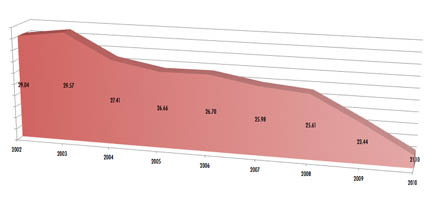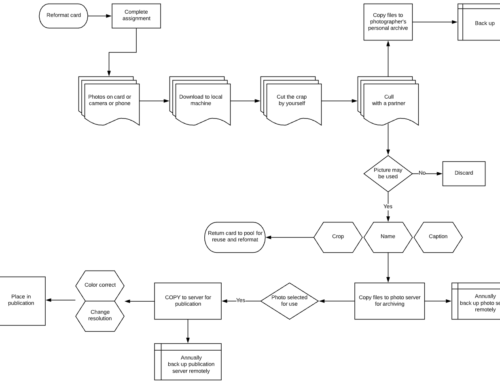As I was sitting around with some friends last night crunching some numbers, it dawned on me how boring pouring through databases as part of the content analysis section of my dissertation looked. Now, however, I’m pretty much done with the data-gathering section and now move on to the data-analysis section. Some of this too will seem boring and repetitious, but even some of the early results using just the descriptive data point out continued cause for concern for those in the newspaper industry. Indeed, this new data shows that printed newspapers will cease to exist by 2050.

During the last nine years, the average newspaper staff size has dropped 28 percent – a one-third loss in newspaper employees.
For anyone employed by local newspapers ranging in size from the Florida Keys Keynoter and Havelock News, both with circulations below 3,000/issue, to the Contra Costa Times and Columbus Dispatch, this probably doesn’t come as shocking news. Even here in the Raleigh area, the News & Observer staff is but a fraction of its former strength.

It's generally well accepted that newspaper circulation has been declining in the last decade. But, as this chart shows, so has market saturation — the portion of the population that reads the newspaper.
But there is more news is all this — especially for all the naysayers who say newspapers will be dead by the turn of the century, which turned out not to be true, by the end of the decade, which turned out not to be true, or by some arbitrary date in the future. If printed newspapers keep declining at the same rate they are now declining, they will cease to exist about 2050.
As I have told hundreds of students over the years, this does, in no way, mean that journalism or the need for well-trained journalists will cease to exist. I firmly believe that through news magazines, niche publications, online media and other media outlets there will continue to be a high demand for high-quality news reporting. However, for students entering J schools all over the world planning to enter the exciting world of newspaper journalism, that they need to diversify their skills ensuring that they have a broad-based knowledge of reporting that will be valuable no matter the medium.
Now I’ve got the challenge of incorporating this relatively superficial data into my much more complex dissertation.
For those who care to know a few more details, the circulation and staff size information was obtained either from the newspaper directly or from the Editor & Publisher International Year Book for 144 United States newspapers selected as part of the bigger study, effectively randomly. The population data through 2010 was obtained from the U.S. Census Bureau.





Leave A Comment